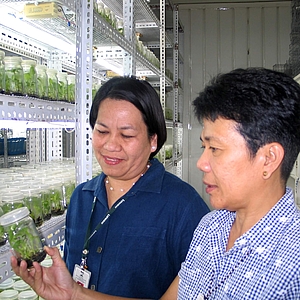The second step of the priority assessment exercise comprised the description of research options and adaptable output. Groups of resource persons described the research options that were selected in the Kampala workshop and subsequently assessed through the economic surplus model and cost-benefit analysis.
Click the links to find out more about each constraint, how RTB research addresses the constraint, status of research, adaptable innovations, expected impacts and target regions and systems.




